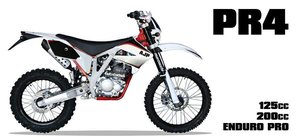AJP PR4 200 [2004 – 2014]: The Underdog Enduro That Packs a Portuguese Punch
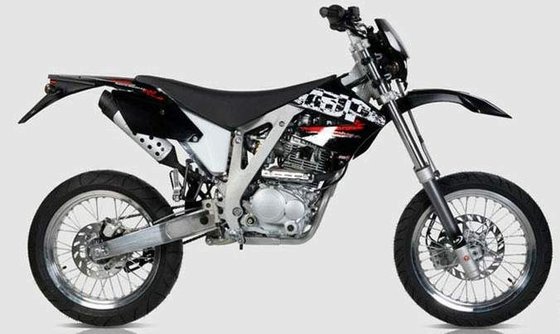
Introduction
The AJP PR4 200 is one of those motorcycles that doesn’t shout for attention but quietly earns respect from riders who value rugged simplicity. Produced from 2004 to 2014, this Portuguese-built enduro/supermoto hybrid occupies a unique niche: a European-designed chassis paired with a Taiwanese-derived engine that’s unapologetically old-school. After spending a day thrashing a well-maintained 2010 Enduro Pro model through muddy trails and asphalt backroads, it’s clear why this bike has a cult following—and where it leaves riders wanting more.
Design & Build Quality: European Bones, Off-Road Soul
The PR4’s visual identity screams “purpose over polish.” Its angular bodywork, high-mounted fenders, and minimalist dashboard reflect its dirt-focused DNA. The steel double-cradle frame (detachable rear subframe for easy repairs) feels robust, with a dry weight of 105–106 kg (231–234 lbs) depending on the model year. That’s featherweight by modern standards—comparable to a Honda CRF250L but with a lower seat height of 909–919 mm (35.8–36.2 in), making it accessible for shorter riders.
Suspension & Brakes: Budget-Friendly Premium Components
Early PR4 Enduro models (2004–2009) came with Marzocchi 40 mm USD forks (280 mm travel) and a ZF Sachs rear shock (300 mm travel), while later variants and Supermoto editions switched to Paioli telescopic forks (260 mm travel). Both setups are adjustable for preload and rebound, a rarity in this segment. Brakes are basic but effective: a 255–260 mm front disc with a dual-piston caliper and a 210–220 mm rear disc. They lack ABS, but the lightweight chassis ensures predictable stoppies on gravel.
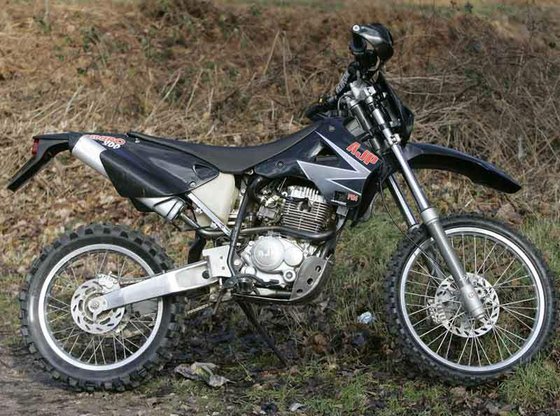
Engine & Performance: Nostalgia in a Cylinder
The PR4’s 198 cc air/oil-cooled SOHC single-cylinder engine is a throwback to Honda’s 1980s XL series. With 18 hp @ 8,000 rpm and 15.5 Nm (11.4 lb-ft) @ 7,000 rpm, it’s no firebreather. But what it lacks in power, it makes up for in mechanical simplicity. The Walbro/PZ 30 mm carburetor is stone-cold reliable, though cold starts often require the backup kickstarter—a charming quirk in an era dominated by fuel injection.
On the Road: Urban Guerrilla
In Supermoto trim (130/70-17 rear tire), the PR4 is a riot in city traffic. The engine vibrates like a paint mixer at 60 km/h (37 mph), but the narrow seat and upright ergonomics let you lane-split with confidence. Fuel economy shines at ~30 km/L (70 mpg), and the 6.8–8 L (1.8–2.1 gal) tank ensures 200+ km (124+ mi) range. Just don’t expect highway comfort—the buzzy single and knobby tires (even in SM trim) make 90 km/h (56 mph) feel like a marathon.
Off-Road: Where It Earns Its Keep
Switch to Enduro mode (21-inch front/18-inch rear wheels), and the PR4 transforms. The torquey low-end pulls you up rocky inclines without fuss, though steep hills demand aggressive clutch work. The suspension soaks up roots and ruts better than any Chinese-built rival, and the 330 mm (13 in) ground clearance laughs at logs. It’s no KTM exc-fighter, but for trail riding or amateur enduros, it’s shockingly capable.
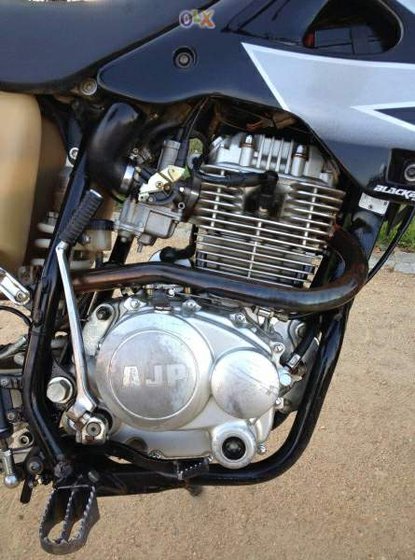
Competition: How Does the PR4 Stack Up?
1. Honda CRF230F
- Pros: Legendary reliability, smoother power delivery.
- Cons: Heavier (112 kg/247 lbs), less adjustable suspension.
Verdict: The Honda is a better all-rounder, but the PR4 out-handles it on technical trails.
2. Yamaha WR250F
- Pros: 50% more power, modern FI.
- Cons: Double the price, complex maintenance.
Verdict: The WR250F is for racers; the PR4 is for riders who fix their own bikes.
3. KTM 200 EXC
- Pros: Lighter, sharper handling.
- Cons: High-strung 2-stroke engine, pricier parts.
Verdict: The KTM is faster, but the PR4’s 4-stroke engine and steel frame are better for daily abuse.
4. Suzuki DR200SE
- Pros: Plush seat, lower seat height.
- Cons: Antiqued suspension, heavier.
Verdict: The Suzuki wins for comfort, the AJP for off-road agility.
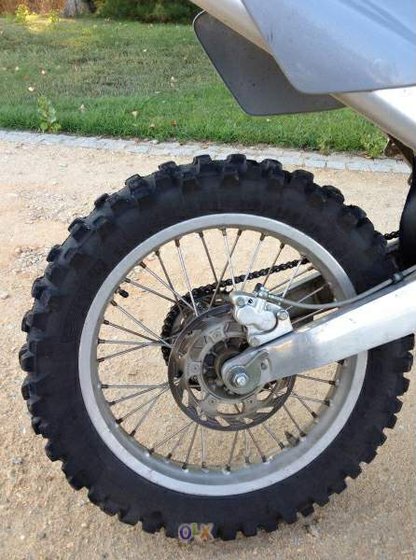
Maintenance: Keeping the PR4 Alive (and Thriving)
The PR4’s no-frills design makes it a DIY dream. Here’s what to watch:
1. Oil Changes
- Frequency: Every 1,500 km (930 mi) or 20 hours off-road.
- Tip: Use NI i-Ride SAE 20W-50 or a synthetic equivalent. The 1.1 L (2.3 US pints) capacity means cheap refills.
2. Carburetor TLC
- Issue: Ethanol fuel clogs jets.
- Fix: Install an inline fuel filter and clean the Walbro carb annually. MOTOPARTS.store’s carb rebuild kits are a lifesaver.
3. Chain & Sprockets
- Upgrade: Swap the stock 520 chain for a DID O-ring chain. The PR4’s 15/48 gearing works, but a 14T front sprocket adds low-end snap.
4. Suspension Service
- Marzocchi/Paioli Forks: Change oil every 100 hours. Use 10W oil for heavier riders.
- Sachs Shock: Rebuild every 200 hours. Check the MOTOPARTS.store for seal kits.
5. Electrical Quirks
- Battery: The YTX5L-BS is tiny but adequate. Keep it on a tender if unused.
- Lighting: Upgrade to LED bulbs for better visibility—the stock headlight is dimmer than a candle.
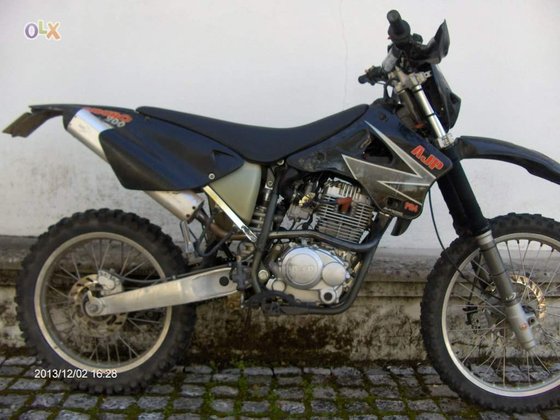
Conclusion: Who Should Buy the AJP PR4 200?
This isn’t a bike for speed junkies or fair-weather commuters. It’s for the rider who values:
- Simplicity: No EFI, ABS, or ride modes—just a carb and a clutch.
- Agility: Flicks through singletrack like a trials bike.
- Pride of Ownership: How many buddies own a Portuguese motorcycle?
Yes, the engine feels agricultural next to a Yamaha, and the vibrations will numb your hands on long rides. But there’s joy in its imperfections. The PR4 doesn’t coddle you—it teaches you to ride better, wrench smarter, and appreciate the raw essence of motorcycling.
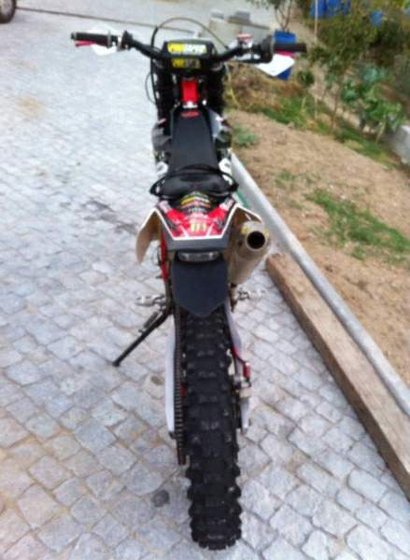
Ready to personalize your AJP PR4 200?
Explore MOTOPARTS.store’s curated selection of upgrades:
- High-flow air filters
- Heavy-duty skid plates
- LED lighting kits
- Premium suspension oils
Because even a rugged gem like the PR4 deserves a little sparkle.
Specifications sheet
| Engine | |
|---|---|
| Stroke: | Four-stroke |
| Ignition: | CDI |
| Max power: | 13 kW | 17.0 hp |
| Max torque: | 16 Nm |
| Fuel system: | Walbro 30 mm carburetor |
| Max power @: | 8000 rpm |
| Spark plugs: | NGK DR8ES, Champion A8YC, LG D8TC |
| Displacement: | 198 ccm |
| Max torque @: | 7000 rpm |
| Configuration: | Single |
| Cooling system: | Air/oil cooled |
| Compression ratio: | 9.0:1 |
| Number of cylinders: | 1 |
| Dimensions | |
|---|---|
| Wheelbase: | 1410 mm (55.5 in) |
| Dry weight: | 105 |
| Ground clearance: | 330 mm (13.0 in) |
| Fuel tank capacity: | 8.0 L (2.1 US gal) |
| Seat height (Enduro Pro): | 919 mm (36.2 in) |
| Seat height (Enduro/Supermoto): | 910 mm (35.8 in) |
| Drivetrain | |
|---|---|
| Final drive: | chain |
| Transmission: | 5-speed |
| Electrical | |
|---|---|
| Battery: | YTX5L-BS, 12V, 4Ah |
| Starting system: | Electric + kick |
| Maintenance | |
|---|---|
| Engine oil: | 20W-50 API SF/SG |
| Brake fluid: | DOT 4 |
| Rear tire (Enduro): | 120/80-18 |
| Engine oil capacity: | 1.1 |
| Front tire (Enduro): | 90/90-21 |
| Rear tire (Supermoto): | 130/80-17 or 130/70-17 |
| Front tire (Supermoto): | 100/80-17 |
| Engine oil change interval: | Every 5000 km or annually |
| Valve clearance (intake, cold): | 0.10–0.20 mm |
| Valve clearance check interval: | 24,000 km / 15,000 mi |
| Valve clearance (exhaust, cold): | 0.20–0.30 mm |
| Chassis and Suspension | |
|---|---|
| Frame: | Aluminum twin-spar (Enduro Pro) / Steel double cradle (Enduro/Supermoto) |
| Rear suspension: | ZF Sachs monoshock with reservoir (Enduro Pro) / Paioli monoshock (Enduro/Supermoto) |
| Rear brakes (Enduro Pro): | 220 mm disc, single piston caliper |
| Front brakes (Enduro Pro): | 260 mm disc, double piston caliper |
| Front suspension (Enduro): | Marzocchi USD 40 mm, multi-adjustable |
| Front wheel travel (Enduro): | 280 mm (11.0 in) |
| Front suspension (Supermoto): | Paioli 36 mm telescopic forks |
| Front wheel travel (Supermoto): | 260 mm (10.2 in) |
| Rear brakes (Enduro/Supermoto): | 210 mm disc, single piston caliper |
| Rear wheel travel (Enduro Pro): | 300 mm (11.8 in) |
| Front brakes (Enduro/Supermoto): | 255 mm disc, double piston caliper |
| Rear wheel travel (Enduro/Supermoto): | 260 mm (10.2 in) |


